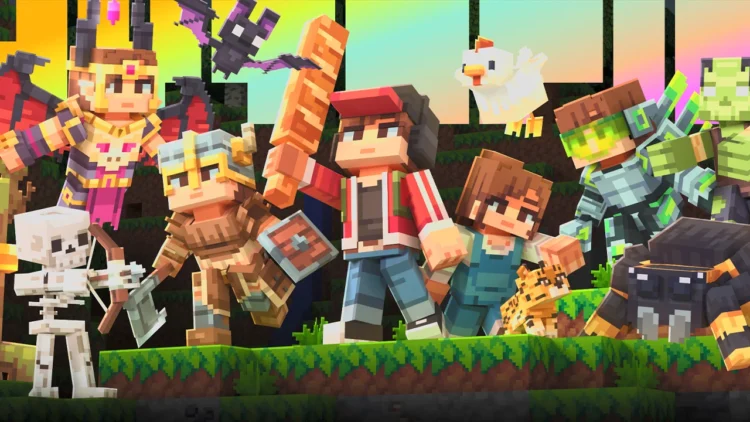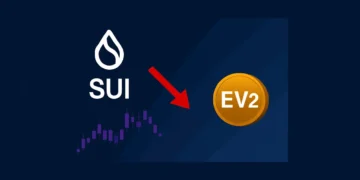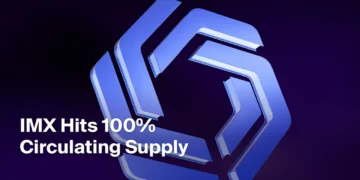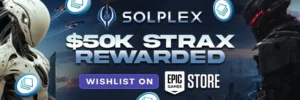Quick Take
- HYTOPIA SDK updates include event routers, particle systems, and world-switching mechanics
- “Frontiers” showcases MMORPG-scale design with full NPCs, questing, and persistent saves
- AI tools now support near-instant game prototyping without writing a single line of code
HYTOPIA began as a workaround. After Minecraft banned blockchain-based servers in 2022, the team behind NFT Worlds pivoted to building its own alternative that didn’t rely on Microsoft’s infrastructure. Now operating as a fully independent game engine and platform, HYTOPIA is reshaping what it means to create and publish voxel-based multiplayer games.
Built from scratch in Rust, HYTOPIA merges a familiar sandbox feel with a modern backend: high-performance networking, integrated Web3 infrastructure, cross-platform support, and a zero-code development loop powered by AI. Its SDK is live, its creator dashboard is active, and players can now launch games directly to browser or desktop with full monetization support.
The platform took a major step forward in June with a series of updates that touched almost every part of its ecosystem, from new particle and event systems to a full-featured RPG project and live publishing tools for first-time creators.
From Minecraft-Like to Fully Modular
While HYTOPIA shares a visual language with Minecraft, its internal structure is closer to a modern engine. The SDK has evolved into a full toolkit with terrain manipulation, character animation, entity control, world switching, and real-time debugging. Developers can now build multi-region RPGs, real-time strategy games, or simple multiplayer survival loops with persistent inventories and modular UI systems.
Recent SDK updates introduced global event routers, wedge and trimesh colliders, over-the-shoulder cameras, and a full particle system. Mechanics like knockback, quest systems, swimming detection, and dynamic spawning are now part of the core toolset—available to anyone publishing through the Creator Dashboard.
These systems are already being used in Frontiers, an in-house MMORPG built by co-founder ArkDev. It includes region-linked quests, trading systems, portal-based fast travel, and a dynamic world clock. And just recently added, players can respawn across zones, progress across sessions, and engage with a growing number of NPCs and enemy types.
AI-Powered Game Creation in Minutes
HYTOPIA is also leaning hard into accessibility. New AI workflows now allow creators to build playable games without writing any code. In a recently shared walkthrough, a user built a map, added mobs, UI elements, audio, and scoring systems using simple text prompts. The game was then packaged, uploaded, and published live while playable directly in a browser via a custom URL.
This process is supported by MCP, a local tool that links AI logic with HYTOPIA’s SDK in real time, making it possible to preview changes, fix spawn points, and iterate on gameplay without touching the underlying engine. Asset placement, logic generation, and UI styling can all be handled through conversational inputs, backed by the AI’s understanding of HYTOPIA’s internal APIs.
Publishing is equally streamlined. Creators can upload assets, edit metadata, attach gameplay footage, and list their game publicly through hytopia.com/create. Support for custom URLs, game versioning, and media galleries is already live.
The Expanding Ecosystem: $TOPIA, Assets, and Infrastructure
HYTOPIA’s broader strategy rests on HYTOPIA Chain (formerly Hychain), a Layer-2 Ethereum rollup designed to handle gasless transactions and in-game economies. The native $TOPIA token powers purchases, rewards, and governance, with staking systems and promotional drops already tied to on-chain activity.
The in-platform Locker system lets players equip cosmetics like hairstyles, eyewear, and armor sets. The marketplace has also been redesigned with support for real profiles, GraphQL infrastructure, and human-readable listings, moving away from wallet-based UX.
June alone saw the addition of 87 new assets, including biomes, UI components, animations, and environment props ready for drag-and-drop use in the editor. Features like smart mesh loading, asset pooling, and automatic collider previews are now standard.
Looking Ahead
HYTOPIA is still early-stage, but it’s operating at a pace and scale that increasingly resembles a full-stack publishing platform. With an SDK capable of running persistent multiplayer worlds and tools that allow anyone to publish live games in under an hour, it’s aiming to position itself as a next-gen alternative to Roblox or Minecraft with far fewer constraints.
Whether through code or prompts, devs are now building MMORPGs, tower defense games, and real-time battle arenas that run in-browser and on desktop with native frame rates. The result is a platform that doesn’t just enable modding or game hosting, but rethinks the entire pipeline from creation to launch.







